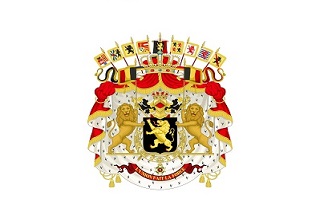Regarding the Inspection and Quarantine Requirements for Imported Pork from Austria
In accordance with relevant laws and regulations of China, as well as the requirements for inspection, quarantine, and veterinary health certification stipulated in the Protocol between the General Administration of Customs of the People's Republic of China and the Federal Ministry of Social Affairs, Health, Care and Consumer Protection of the Republic of Austria concerning the import of pork from Austria into China, pork (including edible pork by-products) from Austria that meets the relevant requirements is allowed to be imported effective immediately.
I. Basis for Inspection and Quarantine
(I) Laws and regulations:
The Food Safety Law of the People's Republic of China and its implementation regulations, the Entry and Exit Animal and Plant Quarantine Law of the People's Republic of China and its implementation regulations, the Import and Export Commodity Inspection Law of the People's Republic of China and its implementation regulations, the Special Provisions of the State Council on Strengthening the Supervision and Administration of Food and Other Product Safety, as well as the Administrative Measures for the Safety of Imported and Exported Foods of the People's Republic of China and the Provisions on the Administration of Registration of Overseas Manufacturers of Imported Foods of the People's Republic of China, etc.
(II) Bilateral protocol:
The Protocol between the General Administration of Customs of the People's Republic of China and the Federal Ministry of Social Affairs, Health, Care and Consumer Protection of the Republic of Austria on the Inspection, Quarantine and Veterinary Health Requirements for the Import of Pork from Austria into China (hereinafter referred to as "the Protocol").
II. Permitted Imported Products
The permitted imported pork refers to frozen (boned and bone-in) pork.
Permitted imported edible pork by-products include:
(1) Carcass portions: frozen unrendered pork fat (body fat, excluding visceral fat), frozen pork hearts, frozen pork livers, frozen pork kidneys.
(2) Others: frozen pork meat (including frozen pork tongues, frozen pork ears (excluding inner ears), frozen pork snouts, frozen pork faces, frozen pork jowls), frozen pork heart tubes, frozen pork trachea, frozen pork esophagus, frozen pork diaphragm, frozen pork liver strips, frozen pork feet (whole feet) (including front feet and hind feet), frozen pork tails.
III. Requirements for Production Establishments
Production establishments (including slaughterhouses, cutting plants, processing plants, and storage facilities) exporting pork to China shall be located within Austria, under the supervision of the Federal Ministry of Social Affairs, Health, Care and Consumer Protection of the Republic of Austria (hereinafter referred to as "the Austrian side"), and comply with the relevant veterinary health and public health laws and regulations of China, the European Union, and Austria.
Production establishments exporting pork to China shall be registered with the General Administration of Customs of the People's Republic of China (hereinafter referred to as "the Chinese side"), and only products produced after the date of registration can be exported to China. Unregistered pork production establishments are not allowed to export to China.
IV. Inspection and Quarantine Requirements
(I) Animal Disease Control
1. There are no cases of African swine fever, swine vesicular disease, and Nipah virus infection in Austria.
2. Austria is recognized by the World Organization for Animal Health (WOAH) as a non-FMD free country without vaccination and a classical swine fever free country.
(II) Conditions for Live Pigs Used for the Production of Pork for Export to China
1. Born, raised, and slaughtered in Austria, with identity identification and traceability to the farm of origin.
2. Originating from farms that have not had any clinical cases of anthrax, tuberculosis, pseudorabies, paratuberculosis, porcine reproductive and respiratory syndrome, and porcine epidemic diarrhea within the past 12 months before slaughter, and no cases of trichinellosis, cysticercosis and sarcocystosis within the past 6 months before slaughter.
3. Originating from farms that have not had any cases of brucellosis within the past 36 months before slaughter, and the live pigs to be slaughtered and the same group of live pigs have not been vaccinated against brucellosis and porcine reproductive and respiratory syndrome.
4. The animals have not been vaccinated with live anthrax vaccine for at least 14 days before slaughter.
5. Originating from farms/premises that have not been subject to quarantine monitoring or movement restrictions within the past 6 months before slaughter due to the occurrence of other notifiable swine diseases stipulated by China, Austria, and the WOAH, but not mentioned in the above provisions.
(III) Processing Requirements
1. For live pigs slaughtered for the production of pork for export to China:
(1) Slaughtered, cut, processed and stored at establishments registered with the Chinese side, with identity identification and traceability to the farm of origin.
(2) Originating from farms that meet the requirements of the Protocol.
(3) Never been fed with veterinary drugs and feed additives prohibited by both parties.
(4) Subjected to ante-mortem and post-mortem inspections for live pigs used for the production of exported pork in accordance with relevant laws and regulations of China and Austria, and the results are satisfactory.
(5) Tested negative for trichinella using the artificial digestion method or other methods recognized by both China and Austria.
(6) All slaughtered live pigs are healthy, without any clinical symptoms of infectious diseases or parasitic diseases, and the carcasses and organs show no pathological changes, with the main lymph node tissues removed.
(7) During transportation to the slaughterhouse and at the slaughterhouse, there has been no contact with pigs that do not meet the requirements of the Protocol, pigs from establishments not registered for export to China, or other animal species.
(8) Not to be processed together with animal products that do not meet the requirements of the Protocol, products from other establishments, products not intended for export to China, or products from other animal species.
2. The pork for export to China is subject to the Austrian national residue monitoring program, proving that the residues of veterinary drugs, pesticides, heavy metals, persistent organic pollutants (POPs), and other toxic and hazardous substances in the products do not exceed the maximum residue limits set by China, Austria, and the European Union.
3. The pork for export to China is subject to the Austrian national microbiological monitoring program, and is free from pathogenic microbiological contamination, complying with the requirements of the laws and regulations of China and Austria, as well as international standards.
4. The products are hygienic and safe, suitable for human consumption.
5. The edible pork by-products for export to China shall also meet other processing and hygiene requirements stipulated in the Protocol.
(IV) Storage Requirements
In the cold storage facilities or freezers where pork is stored, there shall be a dedicated area marked for the storage of pork for export to China.
V. Certificate Requirements
Each container of pork exported to China shall be accompanied by at least one original official veterinary health certificate, certifying that the batch of products complies with the relevant provisions of the veterinary and public health laws and regulations of China, the European Union, and Austria, as well as the Protocol.
The veterinary health certificate shall be printed or written in Chinese, German, or English (English is required). The format and content (statements) of the veterinary health certificate must be approved by both parties in advance.
The Austrian side shall provide the Chinese side with the official quarantine seals and markings, samples of health certificates, a list of authorized certifying veterinarians and their corresponding signature samples, instructions for anti-counterfeiting markings, and the email address for sending electronic certificates for record-keeping purposes. Any changes or replacements shall be notified to the Chinese side at least one month in advance.
The Austrian side shall send the electronic information of the issued veterinary health certificates to the Chinese side through official channels in a timely manner (recommended within 48 hours after the certificate is issued) to facilitate verification by the Chinese side during importation. The Austrian side shall ensure the security and accuracy of the electronic information.
VI. Requirements for Packaging, Storage, Transportation, and Labeling
The pork exported to China must be packaged using new materials that comply with the national food safety standards of China and Austria, as well as international sanitary standards. The pork for export to China shall have separate inner packaging in Chinese and German, or Chinese and English, and the inner packaging shall be labeled with the product name (product description), country of origin, production establishment registration number, and production batch number. The outer packaging shall be labeled in Chinese and German, or Chinese and English, indicating the country of origin, product name, specifications, place of origin (specific to country/province/city), production establishment registration number, production batch number, destination (clearly specified as the People's Republic of China), production date (year/month/day), shelf life, storage temperature, etc., and shall bear the official inspection and quarantine marking of Austria registered with the Chinese side. Pre-packaged pork shall also comply with the laws, regulations, and standards of China concerning the labeling of pre-packaged foods.
Throughout the storage and transportation process for the pork exported to China, the relevant sanitary requirements of China, the European Union, and Austria shall be met to prevent contamination by pathogenic microorganisms and toxic and hazardous substances. The storage and transportation of pork shall be carried out under appropriate temperature conditions, and the core temperature of frozen pork products shall not exceed -15°C.
After the goods are loaded into the container, seals shall be affixed under the supervision of the official Austrian veterinarian before transportation, and the seal numbers shall be indicated on the veterinary health certificate. The packaging shall not be opened or replaced during transportation.
GACC
March 22, 2024






